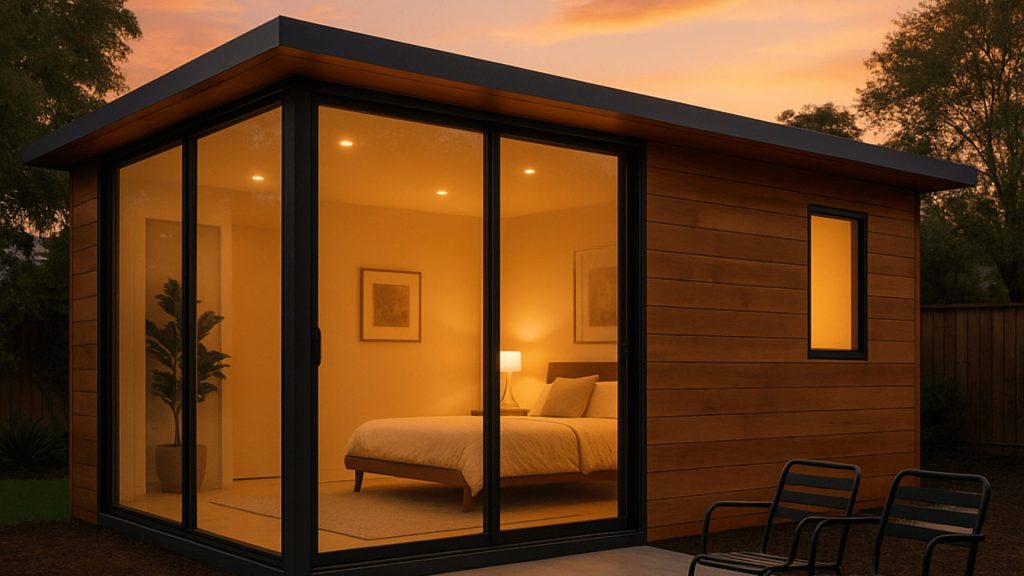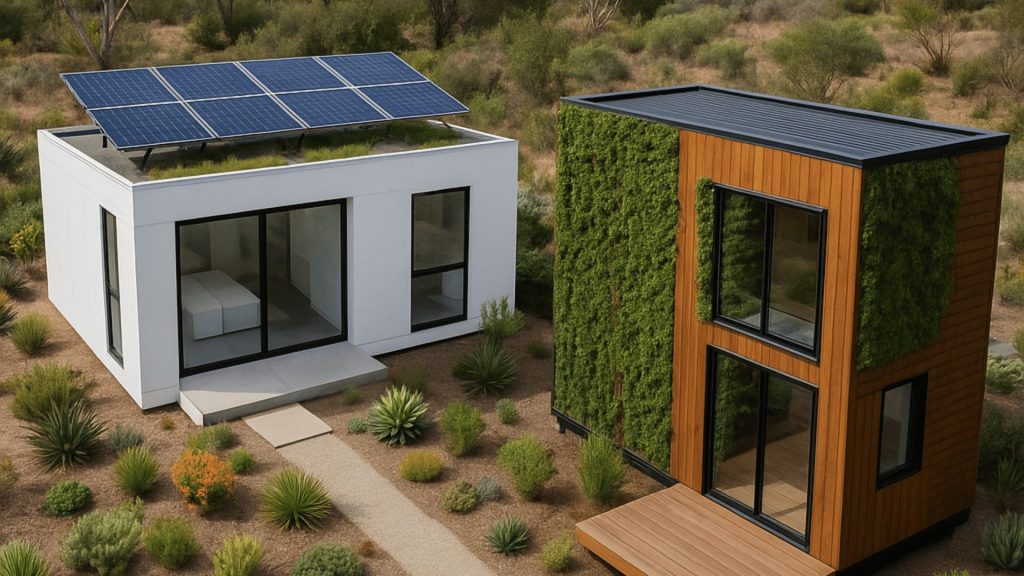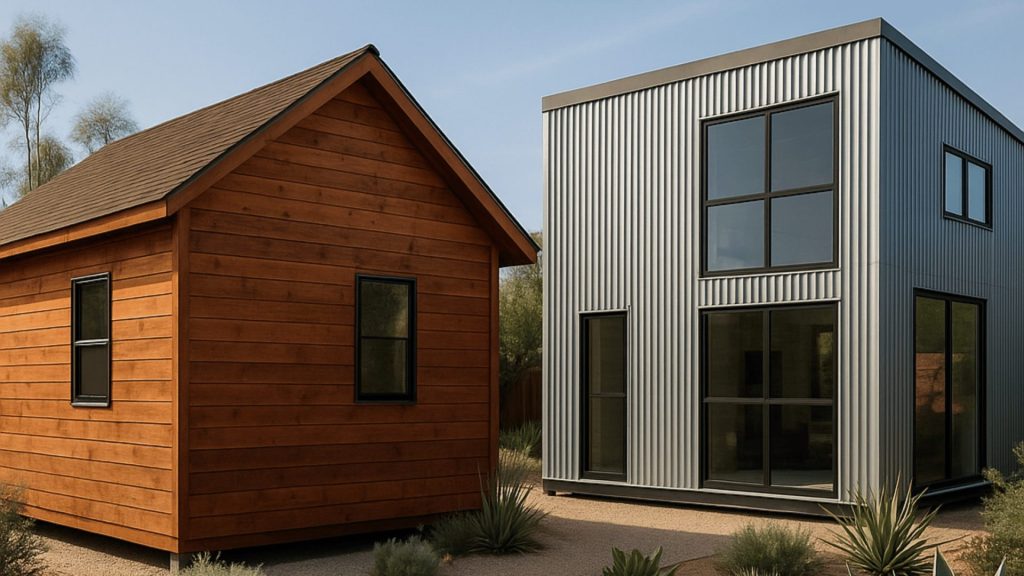If you’ve been researching ways to add living space to your property, chances are you’ve come across the terms modular homes and prefab homes. At first glance, they sound identical, and it’s easy to assume they mean the same thing. But while they’re closely related, there are key differences that can affect how you plan, build, and finance a project especially when it comes to accessory dwelling units (ADUs) in California.
With housing demand higher than ever, understanding these terms is more than just construction jargon. It helps homeowners make smarter decisions about cost, design, and long-term value. Let’s clear up the confusion and take a closer look at how modular and prefab homes compare, and which option might be the best fit for your ADU project.
What Are Prefab Homes?
Prefab, short for prefabricated, is a broad term that refers to any home built partly or entirely in a factory before being assembled on-site. Instead of constructing every piece from the ground up at your property, large sections are made under controlled conditions, shipped, and put together at the final location.
This method of building isn’t new. Prefab housing has existed for decades, but in recent years it has gained attention as a faster, more efficient way to meet growing housing needs.
Common Types of Prefab Homes
- Modular Homes – Factory-built modules assembled on a permanent foundation.
- Panelized Homes – Delivered in wall and roof panels, then finished at the site.
- Manufactured Homes – Entirely built in a factory and transported to the site, often following federal HUD standards rather than local building codes.
Prefab is not one single style of construction. Instead, it’s a category that includes several approaches, each with unique benefits and limitations.
What Are Modular Homes?
Modular homes are one of the most popular subcategories of prefab. Instead of individual panels or a single transportable unit, modular homes are built in large three-dimensional sections, or modules. These modules are fully outfitted in the factory with plumbing, electrical wiring, insulation, and finishes.
Once completed, they’re transported to the property and joined together on a permanent foundation. From the outside, a modular home is often indistinguishable from a site-built house, which is why it appeals to many homeowners.
Key Benefits of Modular Homes
- Built to the same local building codes as traditional homes
- Strong construction that must withstand transport and assembly
- Consistent quality from factory-controlled conditions
- Faster completion compared to fully site-built homes
For California homeowners looking at ADUs, modular construction combines speed with durability, making it a reliable choice.

Modular vs. Prefab Homes: The Key Differences
Because modular homes fall under the prefab category, the terms often get confused. A helpful way to think about it is this:
All modular homes are prefab, but not all prefab homes are modular.
Here are some of the major differences that set them apart:
- Category: Prefab is the overall concept; modular is one type of prefab.
- Construction Method: Prefab could mean modules, panels, or manufactured units. Modular means building complete sections that come together like building blocks.
- Regulations: Modular homes follow the same building codes as site-built homes. Manufactured homes usually follow federal standards instead.
- Design Options: Modular tends to be more customizable than manufactured housing.
- Resale Value: Modular homes often hold value similarly to traditional houses, while manufactured homes may not.
Why the Confusion Exists
The main reason people mix up the terms is that both involve off-site construction. Add in marketing language where builders use “prefab” to mean modular, manufactured, or even panelized, and the lines blur quickly.
For homeowners considering an ADU, the important thing is not the label, but the details: what type of prefab is being offered, whether it meets California codes, and how it will perform over time.
Which Is Better for ADUs in California?
California has embraced ADUs as a practical way to expand housing without large-scale developments. Homeowners are adding backyard cottages, in-law suites, and rental units at record pace.
When comparing prefab options, modular often comes out ahead for ADUs. That’s because:
- Code Compliance – Modular ADUs are built to meet local codes, making them legally sound and long-lasting.
- Project Speed – Because much of the work happens in the factory, delays from weather or site conditions are reduced.
- Flexibility – Modular units can be adapted to different lot shapes and sizes, which is crucial in dense California neighborhoods.
- Property Value – Since they’re treated like conventional housing, modular ADUs add more long-term value to a property.
At Nestadu, our experience shows that modular ADUs give homeowners the best balance of quality, efficiency, and return on investment.

Pros and Cons of Modular vs. Other Prefab Options
Every option has strengths and trade-offs. Here’s a side-by-side look:
Modular Homes
Pros:
- Permanent foundation with full code compliance
- High-quality construction with long-term durability
- Faster build than traditional methods
Cons:
- Modules must be transported, which adds cost
- Some design limitations due to transport size
Panelized Homes
Pros:
- Easier to ship since components are flat panels
- More flexible than manufactured housing
Cons:
- Requires more site work and labor compared to modular
- Longer finishing time than modular
Manufactured Homes
Pros:
- Lower upfront costs
- Entirely factory-built for quick setup
Cons:
- Not always accepted as ADUs in California due to HUD standards
- Typically lower resale value compared to modular or site-built homes
How to Decide What’s Right for You
Choosing between modular and other prefab approaches comes down to your priorities. Before moving forward, think about:
- Budget – Do you want to invest in higher long-term value, or focus on initial affordability?
- Timeline – Is speed a major factor for your project?
- Property Access – Can large modules be transported to your lot easily?
- Use Case – Is the ADU for family living, short-term rental, or long-term tenants?
- Resale Considerations – Do you want your ADU to significantly increase property value?
In most California neighborhoods, modular ADUs strike the right balance. They’re sturdy, attractive, and legally sound, which makes them a smart investment.

Conclusion
So, are modular and prefab homes the same? Not quite. Prefab is the broader category, while modular is a specific type within it. Understanding this distinction matters for homeowners who want to build efficiently, meet building codes, and secure long-term value.
For ADUs in California, modular has proven to be a dependable option. It combines the benefits of factory construction with the permanence and quality of traditional housing.
At Nestadu, we specialize in designing and building modular ADUs that blend beautifully with your property and lifestyle. Whether you’re planning a rental unit, a backyard retreat, or a space for family, our team makes the process clear and stress-free from concept to completion.




